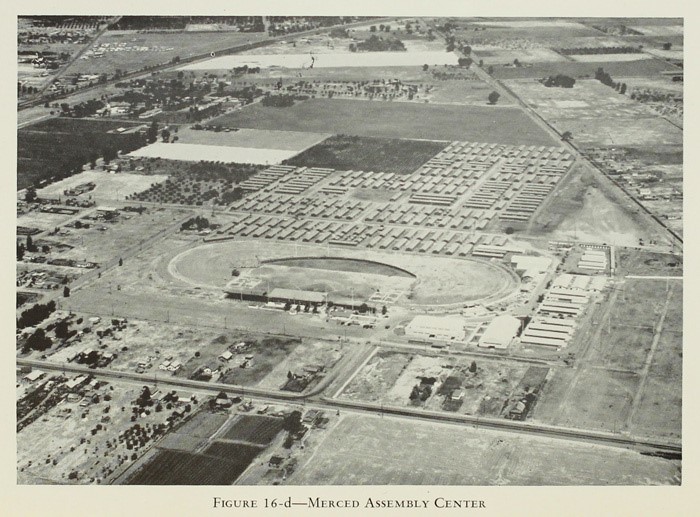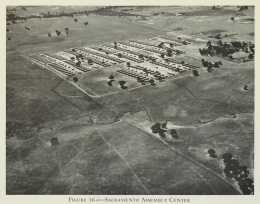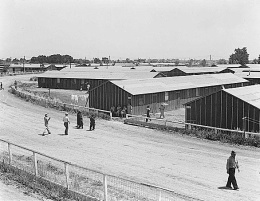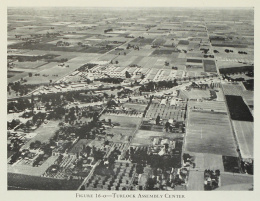Assembly Centers in the Delta
Executive order 9066 was issued in early March of 1942, less than a few months after the attack on Pearl Harbor by Japanese military forces. The purpose of the order was to remove any and all of those who are possible Japanese spies from their homes. Those who did not leave their homes of their own volition were removed from their homes and incarcerated. The agencies involved in building and maintaining the assembly centers for the American-Japanese people were the Civil Affairs Division and the Wartime Civil Control Administration. The Army Corp. of Engineers had built inland assembly centers and had also used temporary facilities to detain the Japanese population on the West coast of the United States while the main camps were being constructed. In all, there were twelve assembly centers in California and one in Oregon, Arizona, and Washington. The main four assembly centers in the Delta region are located in Merced, Sacramento, Stockton, and Turlock.
The Merced site held a little under 4,700 residents of Japanese descent and was located in Merced’s fairgrounds. During their time at the center, the Japanese had to endure poor conditions while being housed in horse stables. In this site, there were about 200 barracks, eleven mess halls, five laundries, forty showers areas, and thirty toilet areas. At the Merced site, there were about 1,000 children, where temporary schools had been set up in order for them to continue their education. The prisoners kept here organized rather quickly, establishing its own police force, volunteer fire fighters, among other crews. To alleviate their boredom, they also set up classes and events centered on art, knitting, talent shows, and athletic activities. The Merced Assembly was closed on September 15, 1942, which is only five months after opening. The inhabitants of the center were moved into Colorado for the duration of the war.
The Sacramento site was built on a former migrant labor camp and was only open for a total of fifty-two days. This camp housed about 4,800 people during its short operating period. Those who were kept here were later transferred to the Tule Lake Camp in California. The camp was used again when the internment was over and families were faced with a housing shortage. About 250 families stayed at the renamed camp, now called Camp Kohler. In the summer of 1947 the camp had burned down and is now recognized as a historical landmark marked by a boulder with a plaque mounted on it.
Stockton’s Assembly Center was built at the San Joaquin County Fairgrounds and was occupied from May to October 1942. There were 125 barracks located at the racetrack and an additional 40 on the other side of the fairgrounds. The population of this camp reached almost 4,400 people during its 160 day run as an assembly center. There was also a newspaper called the El Joaquin than circulated in the camp from May to September. At the time of its closing, the inhabitants of the camp were mainly transferred to the Rohwer Arkansas camp for long term internment.
The Turlock facility operated for a short time as well, from April to August of 1942. Those who were brought to this center were from both the Los Angeles region and the Sacramento River Delta region. This site, was originally the host site for the local melon carnival and the land was purchased several times to bring the total acreage to about 35 acres of land. This center was worked primarily by the detainees and were not offered wages in return for these services. They worked as cooks, maintenance crew and other jobs that provided services and upkeep to the camp. The total population of the Turlock Assembly Center was about 3,700 people who were re-located to the Gila River camp in Arizona for the duration of World War II.
Created by Collin Craig, Mario Tosqui, Oscar Lopez, and Devin Ramstead



